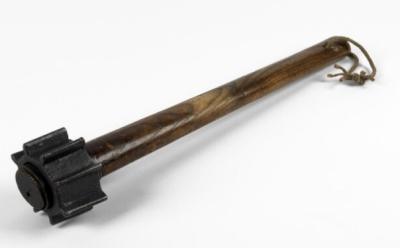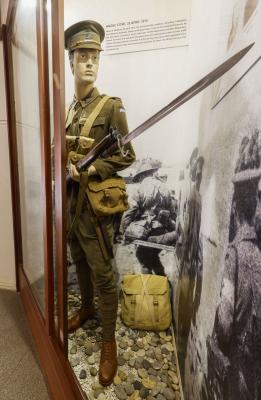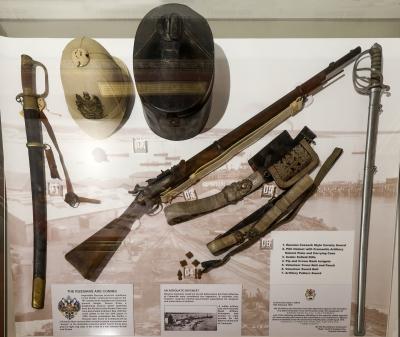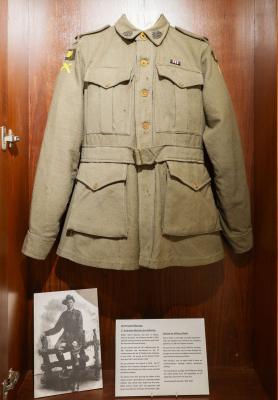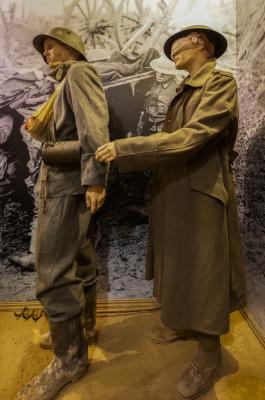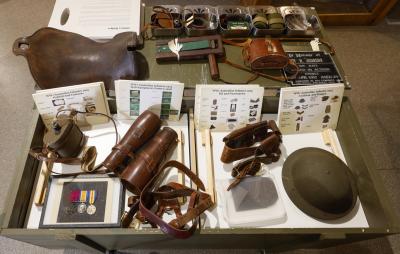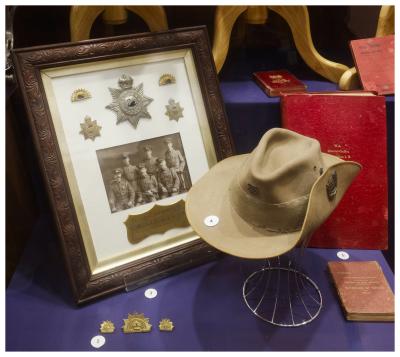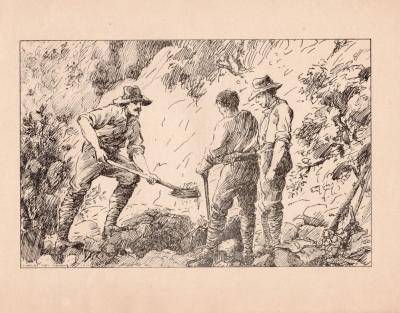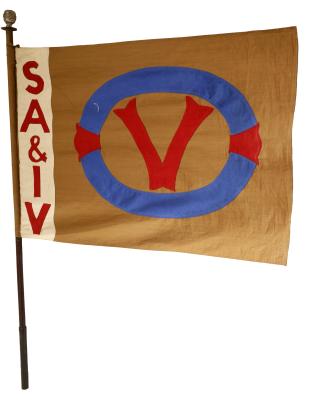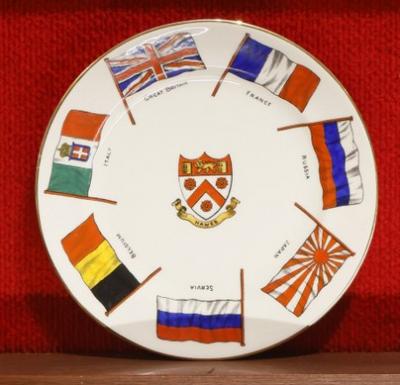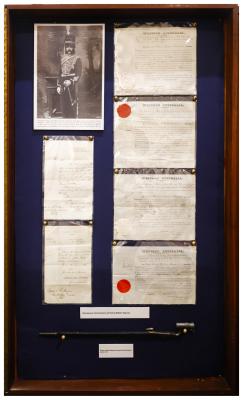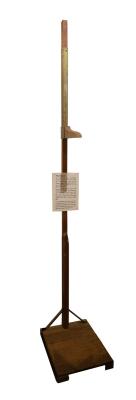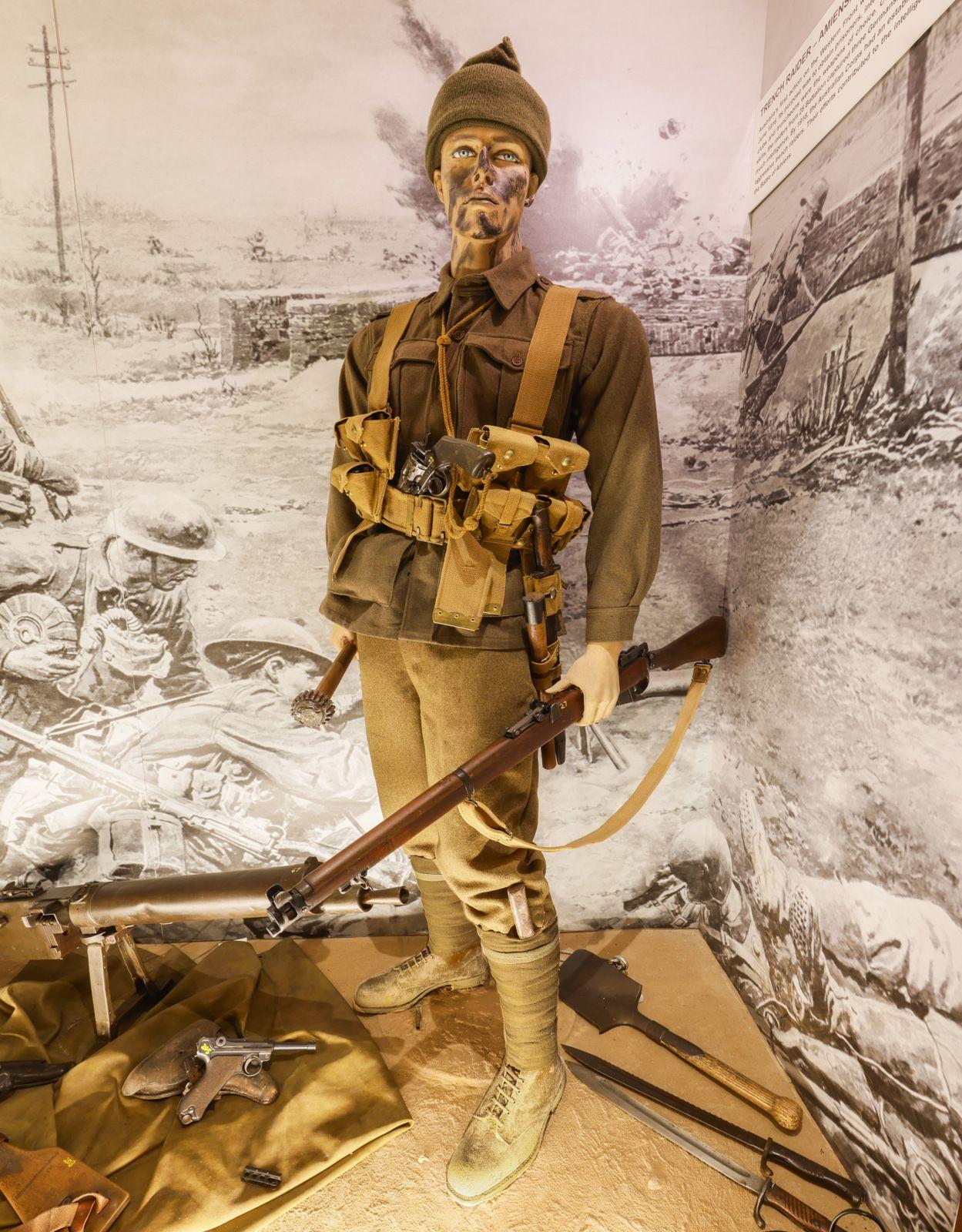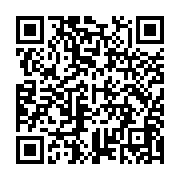World War 1, Mannequin Display, Trench Raider, Australian Imperial Force, 1917
Mannequin depicting the dress and equipment of a Trench Raider on the Western Front in France and Flanders in 1917. AIF and regimental insignia have been removed to lessen intelligence gained in case of capture
Trench raiders were lightly equipped for stealthy, unimpeded movement. Typically, raiding parties were armed with deadly homemade trench raiding clubs, bayonets, entrenching tools, trench knives, hammers, hatchets, pickaxe handles and brass knuckles. The choice of weaponry was deliberate. The raiders' intention was to kill or capture people quietly, without drawing attention to their activities.
Trench raiders were also armed with more modern weapons such as pistols, shotguns, submachine guns, and hand grenades, though these were only intended to be used in an emergency, if the enemy discovered their activities and raised the alarm
Details
Details
Despite the fact that World War I was the first conflict to be fought by mechanized means, trench raiding was very similar to medieval warfare insofar as it was fought face-to-face with crude weaponry. Commanders thought it important for front line troops to dominate no man’s land. The practice of raiding was viewed as a means of reinforcing the offensive spirit of troops in contact. The practice of raiding appealed to and was refined by Canadians and Australians in particular.
The practice had a mixed reaction with the soldiers selected to participate. In spite of the bravery frequently displayed during raiding operations, the majority of ordinary soldiers had no great love for such attacks. As well as the immediate danger of the operation, there was certain to be enemy retaliation, as a consequence. All edged weapons, including bayonets, knives and swords in the collection of the Australian Army Museum of Western Australia are physically secured within locked display cases.
Australian Army Museum of Western Australia
Australian Army Museum of Western Australia
More items like this
Other items from Australian Army Museum of Western Australia
- World War 1, Mannequin Display, Gallipoli Dawn, Anzac Cove, 25 April 1915, 11 Battalion, Australian Imperial Force
- Pre 1914, Fremantle Artillery Volunteers Exhibit, 1879
- World War 1, France and Flanders, AIF Tunic Jacket, 333 MAWSON MM,1 Australian Machine Gun Battalion AIF, 1918
- World War 1, Nurses and Wounded Diorama, France, 1918
- Inter War, Jacket, Belt, Hat and Miniature Medals, HOBBS, 1930
- World War 1, Gallery Cart, Hands-On Area
- Pre 1914, Hats, Kahki Fur Felt - Slouch Hat, 1912
- World War 1, South-West Asia, Turkiye, Gallipoli, Anzac Cove, SILAS, "Crusading at Anzac"
- Pre 1914, Flag of South Africa & Imperial Veterans
- World War 1, Goss Souvenir Plate, 1916
- Pre 1914, Commission Scrolls of William Edward Hayes
- World War 1, Height Measurement Guage, 1914
